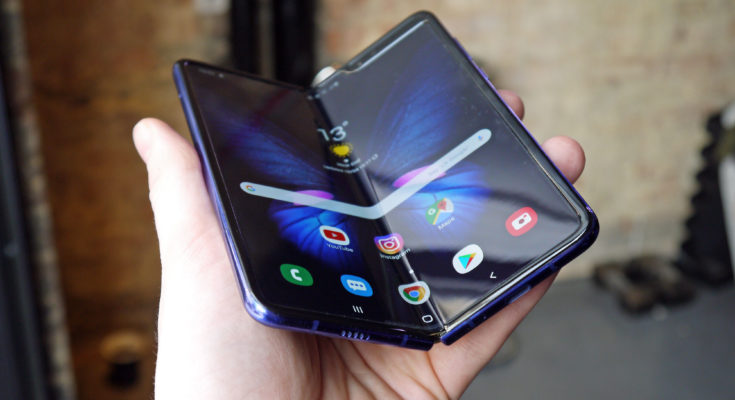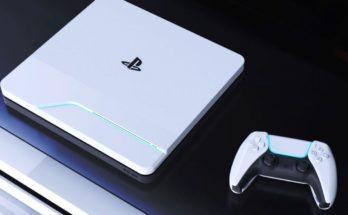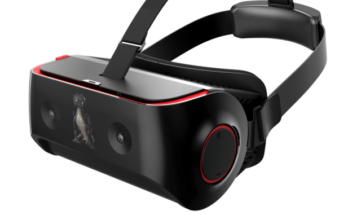This fall, cell phones with huge foldable shows at long last made the jump from model to usable item in the U.S., with the launch of the Samsung Galaxy Fold in September and the declaration this seven day stretch of the new Motorola Razr. And keeping in mind that this new sort of cell phone will hinder individuals with costs well over $1,000—restricting their intrigue to the choosiest of tech adopters, for the present—there’s something novel about having a cell phone with a tablet-like screen that can undoubtedly slip into a pocket without even second thought.
Here’s a glance at six foldable phones effectively accessible or seemingly within easy reach. They may cause them to value their time tested cell phone considerably more—or persuade them that the eventual fate of the phone relies on another structure factor.
1.Huawei Mate X

Huawei’s Mate X, which launched in China on Friday, is the most costly foldable phone up until now, beginning at 16,999 yuan in China, or generally $2,400. The individuals who make good, be that as it may, will discover the Mate X offers a great deal of bells and whistles.
Unfurled, the gadget goes about as a 8-inch tablet. Crease the gadget, and you have two screens: a forward looking 6.6-inch OLED screen, supplemented by a 6.4-inch OLED display on back. The Mate X additionally utilizes a Kirin 980 processor, with eight figuring centers, marry to 8 gigabytes of RAM, and a trio of Leica camera focal points on the back with 40-megapixel wide edge focal point, a 16-megapixel ultra wide edge focal point, and a 8-megapixel fax shooter.
The element stuffed Mate X may never discover its way to the U.S, given the Trump administration has formally barred U.S. companies from purchasing telecom hardware from Huawei. Moreover, the U.S. Division of Commerce precludes U.S. organizations from offering equipment and programming to Huawei without authorization. So while the Mate X runs Android, it won’t have any Google applications introduced, like Huawei’s Mate 30 Pro cell phone. In any case, in spite of those obstacles, the Mate X sold out online on Friday “within seconds,” as indicated by Huawei.
2. LG G8X ThinQ

phone proprietors captivated by foldable phones yet put off by soak costs and innovative bugs may locate an extraordinary trade off in the LG G8X ThinQ.
The Android device, which went discounted toward the beginning of November beginning at $700, pairs its 6.4-inch screen size with the assistance of an extraordinary case that accompanies the gadget and incorporates a subsequent showcase. Essentially drop the G8X ThinQ into the case, and you have a foldable phone with double the screen size for simpler performing various tasks.
Collapsed or not, LG’s cell phone is the genuine article, given its moderate cost. The phone packs a Snapdragon 855 processor with eight figuring centers and 6 gigabytes of RAM, 128 gigabytes of on-board stockpiling, a 32-megapixel selfie cam on the front, and two wide-point cameras on the back.
Be that as it may, there’s a downside to the ThinQ’s unusual structure factor: Not all applications are redone to exploit LG’s double screen include, which may make for some awkward minutes utilizing the phone. Likewise, charging the phone while its in its double screen case requires a little, custom connector that comes included—however is anything but difficult to lose.
3. Microsoft Surface Duo

At an company occasion this October, Microsoft astounded the world when it reviewed the Surface Duo, a cell phone running Android—truly, Android—that sports a couple of 5.6-inch shows that overlap out into a bigger 8.3-inch screen.
Clients will have the option to flip around the Surface Duo’s screens, which can turn 360 degrees, to utilize the gadget either as a phone or tablet. Furthermore, when the screens are one next to the other, the telephone will have the option to perform various tasks with a few applications on the double, moving among projects and shows, stretch one application crosswise over the two screens, or just utilizing the second screen as a console. Albeit a Snapdragon 855 processor with eight figuring centers self control the gadget, little else is thought about the Surface Due—including its value—which is relied upon to be discharged some time during the 2020 holiday season.
4. Motorola Razr

Cell phone clients who affectionately review Motorola’s notable RAZR flip telephone from the mid 2000s might be captivated by the company ‘s new Razr, which the company declared on Wednesday. Accessible for pre-request on Verizon in the U.S. beginning Dec. 26 for $1,499 and shipping in January 2020, the Razr weds the flip telephone structure that made unique such a work of art, with a 6.2-inch pOLED show that folds down the middle when the phone is shut. Outwardly, a 2.7-inch gOLED show shows data like notices, melody tracks, and the hour of day.
The Razr, which will run Android 9 Pie as its working framework, is controlled by a Qualcomm Snapdragon 710 processor with eight figuring centers running at 2.2 GHz, matched with 6 gigabytes of RAM alongside 128 gigabytes of installed stockpiling. As indicated by Motorola, the Razr ought to get the normal client “a full-day of use,” however the organization would not further expound on that guarantee.
Fortune’s short active of the new Razr uncovered a tough tempered steel case, a fresh show, and smart execution, in spite of the fact that the speakers at the base sounded below normal at a cell phone at that cost.
5. Royole FlexPai

Released in October 2018, six-year-old adaptable show startup Royole—situated in Shenzhen, China and Fremont, Calif.— put out the FlexPai, the world’s first foldable phone.
The FlexPai has a 7.8-inch OLED show and gets two—not only one—Android phones when it’s shut. (As per the organization, one of the two phones is the client’s essential phone, while the other is basically a back-up.)
Surrey and allegedly more a proof of idea than an undeniable item, the FlexPai begins at 8,999 yuan, or generally $1,318. The Android-fueled phone is controlled by a Snapdragon 855 processor with eight registering centers, and has up to 8 gigabytes of RAM and up to 512 gigabytes of on-board storage.
Pundits who have utilized the FlexPai were disappointed with the phone’s buggy software, which was hazardous when the gadget performed even the most essential errands, including being collapsed, unfurled and pivoted.
6. Samsung Galaxy Fold

When Samsung declared the Galaxy Fold in February 2019, responses were blended. For an amazing $1,980—more than numerous PCs—the gadget unfurls its 4.6-inch screen to uncover a 7.3-inch tablet with its “Infinity Flex Display.” Also, on-board: a 64-piece processor with eight centers, 512 gigabytes of implicit stockpiling, and 12 gigabytes of RAM.
Samsung touts the Galaxy Fold’s performing various tasks hacks for shuffling three open applications without a moment’s delay, just as a component called “App Continuity,” the capacity to begin connecting with an application on the littler front screen and keep utilizing it on the bigger screen inside. However even Samsung recognized the gadget was basically a work-in-progress when the Galaxy Fold was declared, and the organization expected to be “surprised” with how the Galaxy Fold is utilized everyday.
A few commentators this April got their very own shock when they watched the gadget’s 7.3-inch screen breaking after only a few days of utilization. The failure constrained Samsung to defer the Galaxy Fold’s release, and Samsung versatile manager DJ Koh even called the Galaxy Fold launch “embarrassing,” recognizing in a meeting with The Independent in July he pushed for the Fold’s release “before it was ready.” Eventually the Galaxy Fold turned out in September with a modified design and development.
Disclaimer: The views, suggestions, and opinions expressed here are the sole responsibility of the experts. No Just Examiner journalist was involved in the writing and production of this article.




